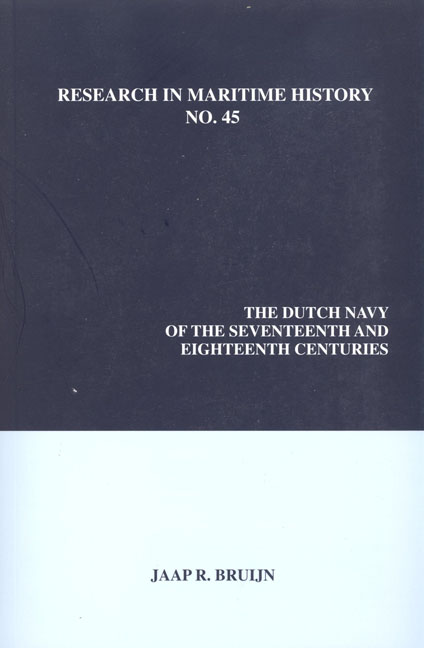Book contents
- Frontmatter
- Contents
- Illustrations
- Tables
- Series Editor's Foreword
- About the Author
- Introduction to the 2011 Edition
- Foreword
- Preface
- Introduction
- Map of the Dutch Republic
- Map of Dutch Naval Activity in European Waters
- Part One The “Old” Navy, Late 1500s-1652
- Part Two The “New” Navy, 1652-1713
- Part Three A Second-Rate Navy, 1714-1795
- In Retrospect
- Bibliography
- Index
Part Two - The “New” Navy, 1652-1713
- Frontmatter
- Contents
- Illustrations
- Tables
- Series Editor's Foreword
- About the Author
- Introduction to the 2011 Edition
- Foreword
- Preface
- Introduction
- Map of the Dutch Republic
- Map of Dutch Naval Activity in European Waters
- Part One The “Old” Navy, Late 1500s-1652
- Part Two The “New” Navy, 1652-1713
- Part Three A Second-Rate Navy, 1714-1795
- In Retrospect
- Bibliography
- Index
Summary
By 1648, the Dutch Republic had been recognized as an independent state and a leading economic and seafaring country with interests that spread over Europe, the Americas, Africa and Asia. Its financial resources were respected and envied, its political structure considered an amazing experiment. Political instability in France as well as in England, together with great rivalries among the Baltic powers, enabled the Republic to attain its pre-eminence in European power politics in spite of its relatively small territory, its population of under two million, and the vulnerability of its commercial interests and even of its public revenues. When the European balance of power was at stake in the last decades of the seventeenth century, Stadholder William III headed the coalition forces which halted the aggression of Louis XIV of France. The beginning of decay of the Dutch Republic during the War of the Spanish Succession at the start of the next century therefore came as a surprise.
According to Jonathan Israel, the Dutch economy reached its zenith at mid-century (1648-1672). The peace with Spain in 1648 was a watershed, after which Madrid treated the Republic as its most favoured nation economically. This had a tremendous effect on Dutch trade with Spain and in American and Mediterranean waters. The time of embargoes and raids had passed. In the West Indies, the Dutch became the principal carriers of goods. The VOC was able to expand its empire considerably in Asia. The four “rich” trades from Asia, Spain, the Levant and Archangel - worth some fifty million guilders annually - provided Dutch industry with the raw materials for refining and manufacturing. The Leiden cloth industry reached its peak. The two wars with England from 1652 to 1654 and from 1665 to 1667 had no lasting economic impact. Much more damaging was the initiation by France in 1667 of numerous protective measures aimed at ending the Dutch ascendancy over large sectors of the French economy. This was the beginning of a “guerre de commerce,” later waged by other countries as well. The rampjaar, 1672 (the year of calamity), was not fatal, and the Republic was able to survive both politically and economically. In that year, both France and England, in cooperation with two German princes, launched a massive attack on the Republic, but with no lasting result.
- Type
- Chapter
- Information
- Publisher: Liverpool University PressPrint publication year: 2011

